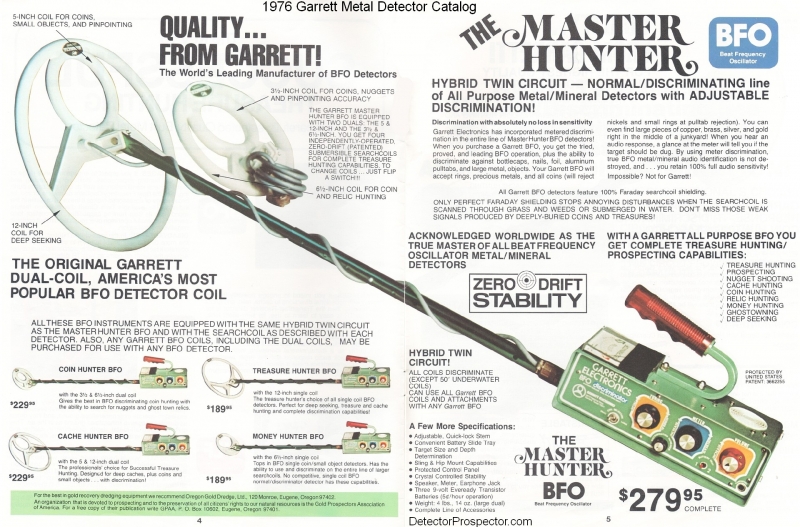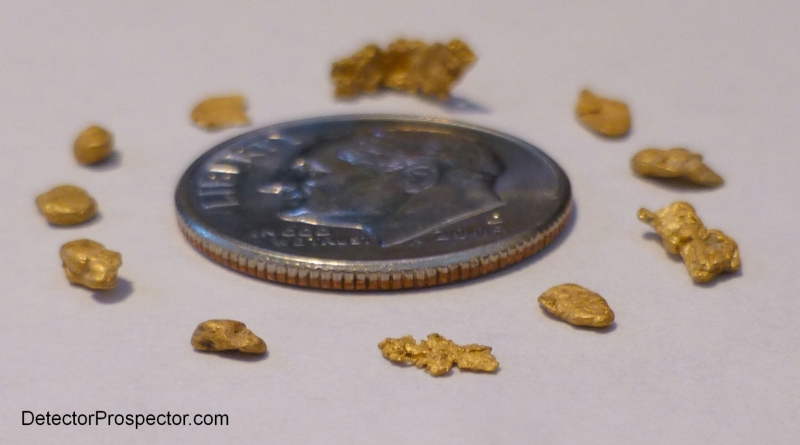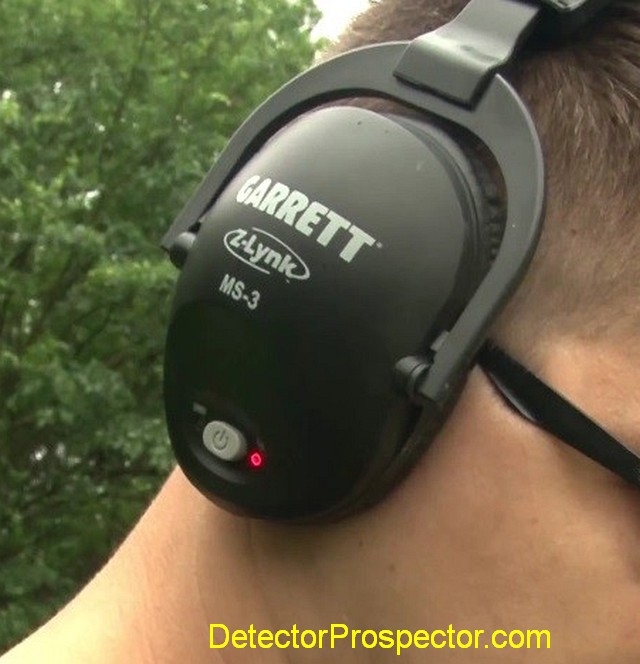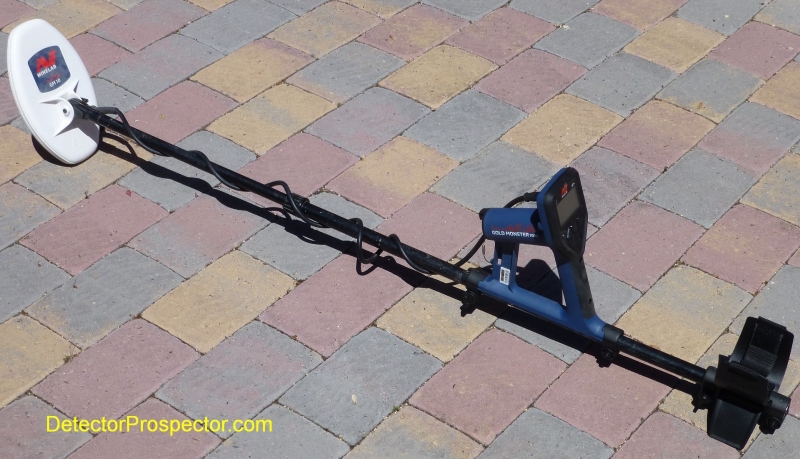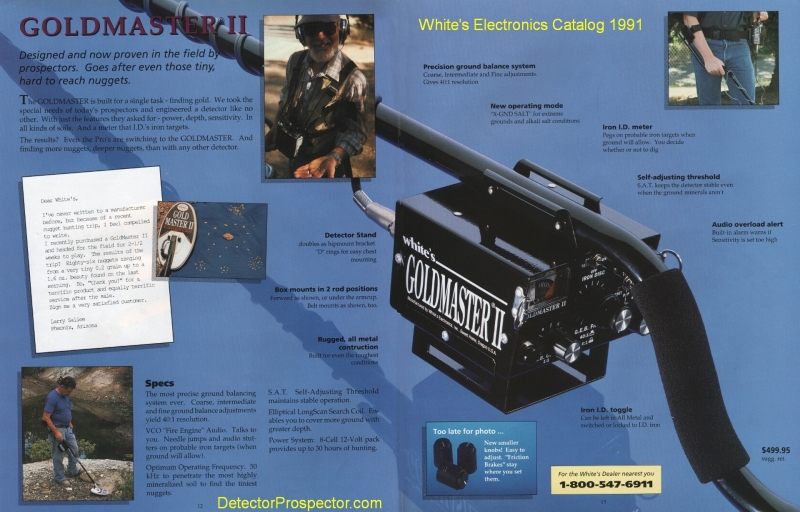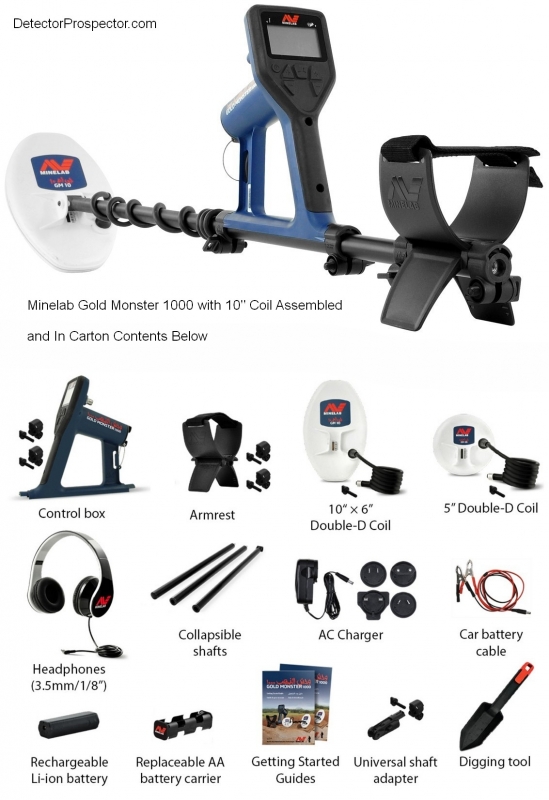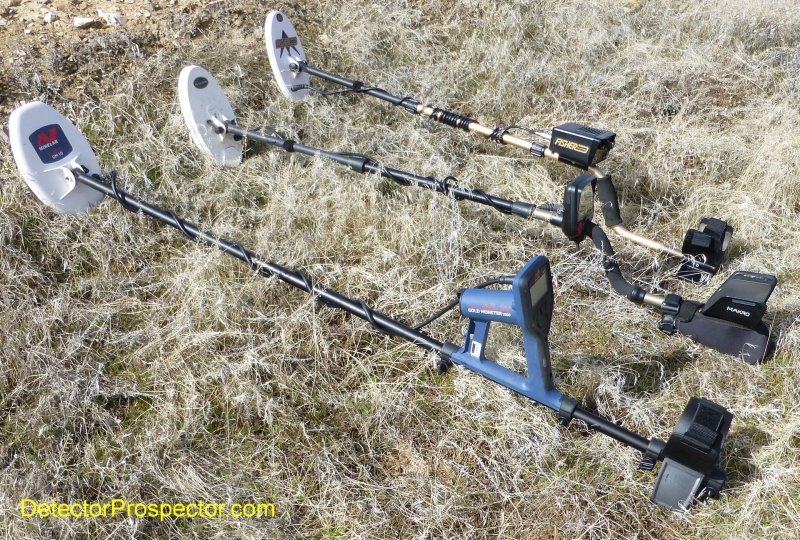-
Posts
19,796 -
Joined
Content Type
Forums
Detector Prospector Home
Detector Database
Downloads
Everything posted by Steve Herschbach
-

Does Anyone Still Make BFO Detectors
Steve Herschbach replied to FeO2digger's topic in Metal Detector Advice & Comparisons
Build your own.... http://www.geotech1.com/cgi-bin/pages/common/index.pl?page=metdet&file=projects.dat More homemade BFO detectors -

Does Anyone Still Make BFO Detectors
Steve Herschbach replied to FeO2digger's topic in Metal Detector Advice & Comparisons
That is news to me - BFO was on the way out when I got my first detector in 1972 and I went with that new-fangled T/R tech instead. BFO units have no ground canceling capability and so depth is extremely limited by today's standards. I have not heard of any sold new in many years. Another article by Carl Moreland BFO Theory Garret was a major manufacturer of BFO units and most used ones seen for sale were made by them. Here is their generic operating instruction manual. 2009 thread about looking for BFO detectors -
After the Fisher CZX, my wish list includes a suped up White's TDI SL or a stripped down Garrett ATX (about gave up on that, made my own), or a Nokta PI. Whites has the ergonomics and price right with the TDI SL but it lacks punch. The ATX has the horsepower but poor ergonomics priced too high (we need under 4 lbs and under $2K). Nok/Mak has stated they are working on PI but that's all we know. I guess while I am wishing I may as well wish for a Minelab GPX 2000 (integrated battery, under 4 lbs, under $2K) or a SDC 1500 (same deal). Recalculating, recalculating, recalculating.........
-
There is a previous thread with a lot of speculation about just what is going on with a couple of the Nokta Impact all metal modes, the Gen(D) and Sta(D) modes. The thought was that they are mixed modes - in other words modes that are running both all metal and disc in parallel. The speculation garnered attention and we have now been provided this explanation directly from Nokta Software Team Leader Alper Tozan regarding these 2 modes: ''I read a lot of comments about Gen (D) and STA (D) modes in some forums and firstly, I want to thank you about all your positive thoughts. On the other hand, I want to clarify one thing. In some forum discussions, these modes are defined as ‘’mix modes’’. These modes are not mix modes as mix modes typically result from at least two different software algorithms or hardware circuits working at the same time for decision making to discriminate and detect metals. These mix modes also show characteristics of two or more different modes at the same time including handicaps of each signal processing. Gen (D) mode, on the other hand, is a true threshold based all metal mode with motion that can discriminate metal without needing any other hardware or higher order software process level. So it always behaves like a classical true threshold based all metal mode but with iron tone and tone break.'' Frankly, for me that raises almost as many questions as it answers. Is an all metal mode that discriminates an all metal mode? Is it not instead a different kind of ferrous/non-ferrous discrimination mode? Whatever it is, it is unique, and that's enough for me! So I will do what I normally do and ignore what is going on under the hood and pay attention to just what it is these modes actually achieve by way of useful results in the field. More on that at a later date. From Nokta Impact Owners Manual, pages 12-13: Static Mode (STA) This is a non-motion mode. In other words, the device will generate an audio response when you hold the coil stationary without swinging over the target. The audio response increases in volume as the coil approaches the target. This mode is recommended for larger and deeper metals. In the STA mode, the device will generate the same audio tone for all metals and it will display the target ID on screen. At the same time, the ID scale will fill up to the right in proportion to the signal strength. Target ID range is 00-99. 00-40 are ferrous and 41-99 are non-ferrous metals. You can discriminate out all IDs below a certain ID by using the Disc. setting and simply avoid these metals in the field. When the device detects a discriminated metal, it will not produce an audio response or an ID. However, the ID scale will fill up to the right in proportion to the signal strength. The threshold in this mode is internal and cannot be adjusted by the user. Changes in the ground and temperature may lead to drifts in the threshold. Threshold drifts will be reflected in the ID scale either in the positive way (right side) or the negative way (left side). The device may emit an audible response in the positive drifts but not in the negative ones. When the threshold drifts, pull the trigger once to retune the detector. Retuning periodically while searching in this mode is recommended. IMPORTANT! For a more stable operation, try keeping the coil consistently at the same height above the ground where you retuned the detector. IMPORTANT! If you retune the detector over a target, the threshold will drift to the negative side and the device will no longer detect the target until the detector is retuned. In addition, the depth of the detector will also decrease. If the drifts are substantial and retuning does not improve the situation, increase the iSAT setting in the Expert Settings to a level where the drifts are eliminated (for detailed information on iSAT please refer to page 24). As the iSAT is increased, the device may detect weaker signals but will not be able to detect the targets anymore if you hold the coil stationary or sweep back and forth over the target. If the drifts still continue frequently, drop the gain to 39, decrease the iSAT and re-ground balance. Static Delta Mode (STA (D)) In principle, it works the same as the static mode. The difference is that the static delta mode will generate the same tone for ferrous and non-ferrous targets at fringe depths but it will discriminate the shallow ferrous targets by emitting a low iron tone. Also, Disc. setting is not available in this mode. Please refer to Table 2 at the end of the manual for different settings used in STA and STA (D) modes. General Search (GEN) Different than the other modes, this mode features a threshold tone which is continuously heard in the background. General Search (GEN) mode is used in 2 different ways in the IMPACT: 1) with the Disc. setting disabled at 0 2) with Disc. enabled (non-zero). When the device is first turned on, Disc. setting will be off. When the Disc. is set at 0, the device does not discriminate targets and detects all targets (metals, mineralized rocks etc.). ID of the detected target is shown on the display (except for negative hot rocks) and the same audio tone is provided for all targets. The audio tone increases in pitch as the coil approaches the target. This is the typical All Metal mode found in most detectors. When using the Disc. Setting in this mode, the device will emit a low ferrous tone for all targets below the Disc. Setting, and a higher tone for all targets above the Disc. setting which changes in pitch as the coil approaches the target. Let's say you set the Disc. to 20. The device will generate a low iron tone for all metals with 0-20 ID and a higher tone for all targets with 21-99 ID. Upon target detection, the threshold will momentarily go silent and only the target audio response will be heard. The duration of the threshold's silence is directly related to the level of the iSAT. Gain, threshold and iSAT settings in this mode are optimized to provide the best performance on different terrains. You can modify these settings based on ground conditions. We recommend using the GEN mode when discrimination is not important and not using it in heavy trash areas or areas containing many hot rocks. Audio Boost in the General Search Mode This feature is not included in the settings on screen. Boosts the sound of weak signals received from small or deep targets making it easier for you to detect those uncertain targets. It is recommended that audio boost should be used on a temporary or as-needed basis because it will not only boost the target signal audio but it will also boost the volume of ground noise and false signals along with the threshold hum. Audio Boost consists of 5 levels (b1-b5). At start up, the Audio Boost level is set to low (b1). To increase the Audio Boost level, pull the trigger and press the minus (-) button simultaneously. Audio Boost will only work in the GEN mode. General Search Delta (GEN (D)) In principle, it works the same as GEN mode. The difference is that the Gen (D) mode will generate the same tone for ferrous and non-ferrous targets at fringe depths but it will discriminate the shallow ferrous targets by emitting a low iron tone.
-
Well I hope so on all the above Des. As soon as I got wind of the Z-Lynk system I sent an email to Garrett urging them to make sure that wireless built into a detector would work with the separate receiver module and regular headphones, for people like me that have headphone preferences. And conversely the Z-Lynk headphones should be made to work with people who have existing Z-Lynk systems. I have to admit I have found it annoying that Minelab has made every version of the WM system incompatible. Hopefully Garrett has avoided doing the same.
-
The people who know won't say, and all the rest of us can do is guess. I will say I don't know. At this point I won't even bother guessing. All the price cutting and lineup shuffling does seem like they are making room at the top end for something. But next few months, end of year, early next year - who knows? These days wise money bets on later rather than sooner with any of the manufacturer's. 2015 Fisher Rumors
-
Congratulations on the meteorites Keith! Probably the first, most, largest and maybe the only ever found so far world wide with the Gold Monster 1000. Enjoy your place in the Guinness Book of World Records while it lasts!
-
I have to admit that what with all my playing with VLF detectors as of late it really is just playing. Literally playing with detectors. But when the time finally comes to get down and dirty serious gold prospecting I will be running my GPZ 7000 day in and day out. It has been fun finding some tiny bits with the GM1000, and surely a joy to swing 3.5 lbs instead of twice that. Fun! But every moment swinging that 6" x 10" coil I am cognizant of just how little soil volume is being processed per swing as compared to my Zed 13" x 14" coil with the power behind it. Apples to oranges for sure, but reality nonetheless. The GM1000 would shine in some of my old haunts in Alaska, where a half gram nugget is a monster and the rain never stops. I know one spot...... Closeup of thin 0.3 grain gold flake center bottom, found with GM1000. Click for larger version.
-
-
Garrett claims to have improved the salt water handling with the new AT Max model. Bottom line is the AT Max is a single frequency VLF so no reason to get overly excited. However, improved salt water stability over the existing AT models will no doubt be welcome.
-
Mike, if you look at that join in my picture above, there is a o-ring visible. Not so visible is a large flat rubber washer just to the left of it in the photo, that forms a gasket between sections. Here it is better lit - click for larger version... If you half heartedly screw the section together and then bang the coil around a lot it could loosen and twist. You need to screw the sections together enough for that gasket to squash slightly, making for a very tight joint. It really is near impossible to do this properly with just the bare shaft in hand. I mounted the control box and coil, then used them to get enough leverage to get it tight. Of course when I took it apart removing control box and coil first, I could not get the rod sections apart with just bare hands. You either do things in the right order, have stronger hands than I (probably would not take much!) or use some sort of soft clamping tools. I think it is best set up as a stay in one piece unit with rod sections firmly screwed together, or go to a standard telescoping rod setup like I have done. The unit is as tippy as dozens of other VLF detectors - Fishers, Garretts, other Minelab's, etc. No better or worse. That was always a big plus for the Whites horizontal metal box design. My DFX stays upright, everything else falls over. In the photo below the Impact is slightly more stable than the other three, which are a toss up for tipping. Trivia question. Which unit below can be operated without worry in the rain without a rain cover?
-
I saw that post also, not sure if it is just that dealer, or just Oz, or everywhere. Three more weeks.... Anyway, the Gold Monster 1000 comes with a three piece rod that screws together to form a single 53" long rod. Well made, but I like a telescoping rod myself. I dug out an old Minelab GP upper shaft and lower rod, works great! Same as used on GPX at this time: Minelab Straight Upper Shaft for Gold Detectors 3011-0182 US$45.00 Minelab Lower Pole for various Minelab Metal Detectors 3011-0172 US$42.00 Note that you can't just take the GM1000 lower rod and plug it into some other upper shaft assembly due to the flange on top. Otherwise it might fit. Total weight on my postal scales with AA batteries installed 3 lbs 6.7 oz (3.42 lbs) or 1550 grams. I like it - it will stay on this rod. I did briefly look at a straight two piece upper shaft with the knurled tightening knob in the middle, but to get proper spacing the GM1000 control box wanted to be clamped down right over the knob and so that will not work - or at least that particular one was not spaced right. If two piece upper shaft you need the upper most section to have at least 20" free and clear to mount the control box and armrest.
-
I have said in the past that the GPZ 7000 is like a "Super VLF" in the way it operates and reacts, but with the PI dual tone twist. If I gave you the impression however that a Gold Monster 1000 handles variable ground better than a GPZ 7000 that is dead wrong. I am talking about in comparison to other "high frequency" induction balance detectors running at 30 kHz and higher. The only situation where a GM1000 beats a GPZ 7000 is in A. hitting tiny sub-grain bits of gold and B. employing ferrous discrimination if needed. But for sheer depth in bad ground the GPZ 7000 is just going to blow the GM1000 away. I will still be using a GPZ 7000 for nearly all my detecting. The GM1000 will be for more for quick recon work in rough terrain, particularly where tiny bits of ferrous trash lurk, like logging country. Or for picking over a lode mine dump looking for small gold in quartz specimens. That sort of stuff. The same reason why many people are now using a GPZ 7000 but also have some other VLF detector along. Alaska is a different case with miles of tailing piles, relatively low mineralization, large nuggets, and lots of deep ferrous junk. Those conditions still tend to favor a good mid-frequency detector with a largish coil. Almost anything running at 13 - 20 khz and with an Ultimate 13 type coil makes a good Alaska tailing pile machine. The GM1000 would be better in Alaska for shallow bedrock until a larger coil is available to tackle deep tailing piles.
-
The Minelab Gold Monster 1000 actually has two distinct discrimination methods. The first is reminiscent of the White's GMT "Probability Meter". This is an LCD display that operates in parallel with the all metal mode, and is by far my preferred way of operating the GM1000 while having discrimination. You operate as normal in all metal mode, with no loss of depth or any other changes in operating parameters. The meter is doing its thing at the same time, with a very easy "right = non-ferrous and left = ferrous" indicator as seen below. The farther to the left, the greater the chance you are dealing with a ferrous object or an iron based hot rock. The GM1000 ground tracking is going to handle all the hot rocks a ground balance system can handle, but it can't get them all. The remainders will normally bang left on the meter as ferrous targets. Be aware however there is such a thing as a non-ferrous hot rock (graphite, copper ore) that can read solid non-ferrous. The bane of all prospectors except those prospecting for graphite and copper! For ferrous trash in my opinion most people approach discrimination incorrectly. All ferrous discrimination systems can be fooled. So when you use a ferrous discrimination system, look for reasons to dig instead of reasons to not dig. Some people say dig everything, and this is wise except when totally impractical. If you are in a trash pit, use the discrimination to avoid digging 1000 worthless holes. But still look for reasons to dig. Don't get lazy. If the ferrous meter bangs full left pass after pass after pass of the coil - you can be fairly safe in ignoring that target. But if it goes non-ferrous on even just one pass of the coil, or is only repeatedly one bar ferrous, dig it up. Another way to look at it, try to get the meter to give you a reason to dig by trying to massage the signal with the coil to get a non-ferrous reading. Don't try to turn a non-ferrous reading into a ferrous reading because you do not feel like digging. When in doubt, dig it out! Finally, there is a "iron reject" mode that is preprogrammed to silently reject ferrous targets. This is similar to the "iron disc" mode on a Gold Bug 2. Just put it in disc mode and ferrous targets, including ferrous hot rocks, will go silent or break up. There is an attendant loss in depth and sensitivity just as occurs with all silent reject discrimination systems. Not only do you lose depth, but if the system makes a bad call as you pass over a target you will never know it was there. Better to use all metal and hear every target, then analyze before making a dig or no-dig decision. However, a silent reject disc system does provide you with a system of the last resort for dealing with crazy thick trash or hot rocks. You just want to shut the darn thing up, go to disc mode. Again, you really should dig broken and "iffy" targets, but you can go into a simple "dig them only if they sound good" mode for the worst places. The options: 1. Use all metal and dig everything. 2. Use all metal and dig everything but 100% ferrous meter readings. 3. Use all metal but only dig targets that read on the meter as 100% non-ferrous (cherry pick mode). 4. Activate disc mode and dig all good sounding and iffy targets. And last resort 5. Activate disc mode and only dig them if they sound great. I am counting at least five different levels of possible discrimination options there.
-
The 10" coil will hit gold nearly as small as the 5" coil. My personal take on the GM1000 is that I will use it almost exclusively with the 10" coil as a highly sensitive reconnaissance detector. If I wanted to pound a 10 square foot patch of ground for an entire day trying to get every last tiny bit out of it then I see no advantage using a GM1000 over a Gold Bug 2. The big advantage in my opinion comes in leveraging the 10" coil and superb ground tracking to cover highly mineralized variable ground. The kind of ground where a Gold Bug 2 would require constant ground adjustments, and yet at the same time having more sensitivity than something like a Gold Bug Pro. Imagine a Tesoro Lobo that is as hot as a Gold Bug 2 and you sort of get the picture. No doubt there will be people who specialize in using the GM1000 almost exclusively with the 5" coil to chase the tiniest bits but I prefer these days to cover more ground in the search for the ones that add up faster. I really hope that Minelab considers a 14" elliptical for the GM1000 in the future for this very reason.
-

Problem With White’s Goldmaster Detector
Steve Herschbach replied to Steve Herschbach's topic in White's Metal Detectors
By the way, the machine being referred to here is the Whites Goldmaster 2 (1990-1993). So we are talking about a detector that is around 25 years old. -
Just got this question via email: "I picked up a GM 2 with long scan coil at a pawn shop. Replaced the batteries and turned it on. It's quiet for about 5 seconds, then screams! Doesn't matter what knob I turn, the volume is overwhelming. What am I doing wrong?" Well, I have to assume it worked when you got it and this happened later. Surely you do not have the coil sitting on a table near metal or something but have to ask. All I can suggest is disconnect the coil and reconnect again firmly. Triple check the batteries, maybe even swap them for yet another fresh set. Many detectors sent in for service have one bad battery out of the set, or a battery in backwards. After batteries coils are like ten times more likely to fail then control boxes. So make sure of that coil connection, check the pins, wiggle the coil cable. When all else fails, I give the detector some good shakes and knock the control box around a bit. Nothing to lose at this point and maybe a loose item or connection will be revealed. My best guess is coil failure. If I was around my old shop I would swap out the coil to check it but you probably don't have that option. Depending on what you paid for it may be time for a trip to White's. Any other ideas from forum members always welcome!
-

Metal Detector Buying Advice
Steve Herschbach replied to mysia's topic in Metal Detector Advice & Comparisons
You are welcome. You have an excellent metal detector. The XP Gold Maxx Power is as good as any of the detectors I listed on my general purpose list. You can get deeper by using something like a Minelab GPX 5000 with a large coil, but you will have to dig everything. Deep seeking detectors have no effective ability to discriminate. If success is lacking, concentrating on research and better locations will pay off more than constantly changing detectors. -

Metal Detector Buying Advice
Steve Herschbach replied to mysia's topic in Metal Detector Advice & Comparisons
When purchasing a typical consumer metal detector you have a few basic choices. There are general purpose coin, relic, and jewelry detectors. Some of these are waterproof to ten feet. There are diving detectors that are waterproof to 100 feet or more. And there are specialized gold prospecting detectors. Well known popular brands in the United States include Bounty Hunter, Detector Pro, Fisher, Garrett, Makro, Minelab, Nokta, Teknetics, Tesoro, White's and XP Some examples of popular models sold in the United States: 1. Budget General Purpose Detector - Garrett Ace 250 2. General Pupose Detectors - Fisher F75, Garrett AT Pro, Minelab X-Terra 705, Minelab CTX 3030, White's MXT, and XP Deus 3. Diving Detectors - Fisher CZ-21, Minelab Excalibur, White's Surf PI 4. Gold Prospecting Detectors - Fisher Gold Bug Pro, Fisher Gold Bug 2, Minelab SDC 2300, Minelab GPX 5000, Minelab GPZ 7000, Tesoro Lobo, White's GMT Depending what country you are in there may be other choices. If you are new to this, stick with popular models made by mainstream manufacturers. Where it can be had, local dealer support and knowledge can be critical. Know what the warranty is, and who will handle the warranty if the need arises. -
Forum members of course get extra tidbits! Physically I have to admire the sheer chutzpah of Minelab, the high tech guys, making a metal detector designed to mount on a broom handle - how cool is that! Technically all you need is the control box section with AA battery holder and a coil and you have all the makings of a functional metal detector. However, there are a few things I want you to know about in particular. They are not secrets but might go unnoticed. The Minelab Gold Monster 1000 is going to be sold worldwide in exactly one configuration - see the picture below for box contents. First off, the three piece collapsible shaft assembly. This is not a telescoping shaft assembly. It is three rod sections that screw together, and then the control box and armrest slide around and clamp down where you feel most comfortable with them. This works fine but for people like me used to a quick telescoping rod, this is first thing I might replace. No worries if you just toss your detector in your truck fully assembled. But if you want to collapse and extend the unit quickly to stow away, or easily accommodate the height of two different people, you may want a different rod assembly. All you need is a lower rod and one or two straight upper sections depending on how short you want it to telescope down - you already have the grip and armrest and mounting hardware. I will play around with shaft assemblies I have sitting around and report back on possible part numbers later. A GPX upper shaft and lower rod will work fine for you GPX owners. The other thing is car charging. Yes, you can use the included 12V charger clips, but how convenient is that really? The good news is most of you probably already have a standard 12V cigarette plug car charger adapter around someplace - the one from the GPZ 7000 for instance works just fine. If not you will probably want to round one up if you are wanting to charge in your vehicle while driving around. The rechargeable battery has a little led on the end that flashes green when it is charging properly. If you try a charger and only get a red light, something is wrong. OK, what about the Minelab Gold Monster 1000 versus Fisher Gold Bug 2? I am not going to tell anyone that has a Fisher Gold Bug 2 with 6" coil and knows it inside out that they have to run out and get a GM1000. I have owned a Gold Bug 2 since day one and it is a sweet little rig, especially in milder ground where you can run it jacked to the max. In low mineral ground I expect there will continue to be plenty of Gold Bug 2 fans. Mine is not going anyplace. However, for anyone who is in the market for a gold nugget detector with a couple coils for under US$1000 the Minelab Gold Monster 1000 is a hot rig. I really hate air tests. To me what matters most with prospecting detectors is how they handle the ground. Machines can air test great and fail on the ground. But for those who like air tests I can tell you that my GM1000 with 5" round DD coil matches my Gold Bug 2 with 6" coil on a 0.1 grain (1/4800th ounce) spec of gold. GM1000 on max manual sensitivity, and Gold Bug 2 in Low Mineral (the hot setting) at max sensitivity and audio boost on. In fact, the GM1000 actually appears hotter in all metal mode by having a tremendously boosted audio. Where the Gold Bug 2 has that nice little zip zip thing going on a 0.1 grain the GM1000 fairly audio fairly explodes at full audio. Zip zip versus Bam! I am not saying more depth here, but easier to hear tiny targets which ends up giving the impression of more depth. Yes the GM1000 lacks a threshold, but as I note in the review if you push the manual sensitivity high on most mineralized ground you will get light ground feedback that makes me feel just as good. That may go lacking entirely in real mild ground however. All I can say is it works if you give it a chance and maybe learn to enjoy the quiet of the great outdoors instead. That loud audio pop I just mentioned above will stop you cold. I wish I had a lot more time on the Gold Monster 1000 to be able to be more definitive on the this versus that thing. The reality is I have been very busy and the weather around here just sucked this winter. When I had time it was snowing or raining and when it quit doing that I was busy. The time I have on it however I would not have any problem going up against somebody with a Gold Bug 2 and 6" coil with the Gold Monster 1000 and 5" coil - no way I would be feeling at a serious disadvantage in any ground. And 10" coil to 10" coil in bad ground/nasty hot rocks, I would rather be running the Gold Monster 1000. The White's GMT is probably a better matchup versus the GM1000 for 10" DD coils and bad ground but I have not had a GMT for some time. The GMT runs great in fixed ground balance mode. However, I will bet on the Minelab ground tracking over the GMT ground tracking in the worst of conditions. Makro Gold Racer and Minelab Gold Monster 1000? For just gold prospecting and nothing else, GM1000 is the easy answer. The Gold Racer is still unique in offering target VDI capability in a high frequency detector however, and again, mine is not going anywhere. Early days, and really, please do not do things just based on the reporting of any one person. It is all the rage to diss us official testers these days so do wait to hear more from actual purchasers of the Gold Monster 1000 if you have any doubts at all. One thing I wanted to make very clear in my report on the Minelab website is that at the end of the day no matter how good a single frequency detector this is it is still just a single frequency metal detector. There are plenty of reasons still to own a SDC or GPX or GPZ. Here is my final thought on all that. The GPX series culminated in the GPX 5000 with a wealth of settings and timings. The GPX can run a huge number of coils and a large number of settings that allow it to be customized for nearly any scenario. I still think there is ground and gold where a GPX may have an edge over the GPZ 7000 on large nuggets. Can't swear to that, no real evidence, just my opinion. I also think the SDC 2300 has an edge on the tiny gold versus my GPZ 7000. Yet I sold my GPX 5000 and SDC 2300. Why? Because in my opinion for my ground and my gold I have to choose what to swing and for me the GPZ 7000 represents my best chance of getting whatever gold goes under that 14" coil as can be had versus any other single machine and coil combination. It was obvious to me the other units were just not going to get any real use as I would grab the GPZ 7000 nearly every time. The Minelab Gold Monster 1000 is 100% intended to replace the Minelab Eureka Gold. The Eureka can be run at 6.4 kHz or 20 khz or 60 khz and with various coils that means it might have an edge here or there over the GM 1000. However, you have to know what frequency to be in or make multiple passes over the ground, and you had better really know your machine. The Gold Monster 1000 again represents a better choice running one coil and one choice of settings in a single frequency continuous wave (commonly referred to as VLF) detector and getting the bulk of the gold in the one and possibly only pass over the ground. Power AND simplicity - that was a design goal with the SDC 2300, GPZ 7000, and now Gold Monster 1000. So far I would say that is a winning formula for Minelab. And for once we get a featherweight Minelab!!
-
Two fingers, maybe 14 words per minute tops. My speed and accuracy has really gotten screwed up typing with one finger on my phone or iPad combined with spell check doing a number on me at times. As slow as I am I have to slow down more. I tend to bang stuff out, post, and go back and edit later. Sloppy! Thanks for the kudos, the warm fuzzies make the effort worthwhile!
- 12 replies
-
- mining claims
- gps and mapping
-
(and 1 more)
Tagged with:

